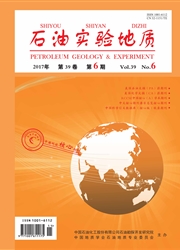

 中文摘要:
中文摘要:
基于对先前研究成果的分析,归纳了现行层序模型(沉积层序、成因层序和T-R层序)和层序地层标准化流程,对比分析了各层序模型的优点和不足,认为各层序模型均为不同地质背景下地层记录的理论提炼,具有各自的优点与不足,适用于各自的地质背景;模型构成(体系域)的出现受控于可容纳空间与物源供给的相互作用,具体归因于构造、海平面、物源和气候等的变化;层序地层的标准化就是独立于模型与依赖于模型2个方面和方法的结合,标准化的关键在于层序地层格架基石或建造块(成因类型)的识别。
 英文摘要:
英文摘要:
Based on previous research,the paper summarized several sequence stratigraphic models( depositional sequence,genetic stratigraphic sequence and transgressive- regressive sequence) and standardized the workflow of sequence stratigraphy,and analyzed the merits and pitfalls of different sequence models. Sequence models representing stratigraphic records in different geological settings were applied to corresponding settings. The occurrence of system tracts was controlled by the interplay between accommodation and sediment supply,and was ascribed to changes such as tectonics,sea-level,sediment supply,climate and so on. The standardized workflow of sequence stratigraphy was based on the model-independent approach and model-dependent approach. Differentiating genetic types was essential for the standardization of sequence stratigraphy.
 同期刊论文项目
同期刊论文项目
 同项目期刊论文
同项目期刊论文
 Geochemistry and mineralogy of coal in the recently explored Zhundong large coal field in the Jungga
Geochemistry and mineralogy of coal in the recently explored Zhundong large coal field in the Jungga High quality of Jurassic Coals in the Southern and Eastern Junggar Coalfields, Xinjiang, NW China: G
High quality of Jurassic Coals in the Southern and Eastern Junggar Coalfields, Xinjiang, NW China: G 期刊信息
期刊信息
